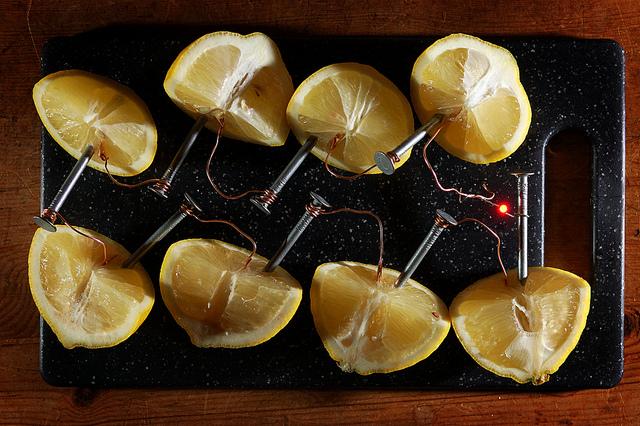Australia’s Future Submarine: the great battery debate
Posted By Paul Greenfield on April 14, 2016 @ 11:00

Unlike nearly all northern hemisphere diesel-electric submarines, the Swedish-designed Collins class is intended to meet a unique operational requirement—to routinely conduct long and distant patrols. This presents many engineering challenges not faced by other navies. To quote a retired submarine engineer, ‘No other navy flogs its diesel-electric submarines thousands of miles across the ocean and then sends them on patrol’.
Our Oberon class shared some similar characteristics with Collins—including long range. The Oberons travelled on the surface and dived just short of the patrol area, but the Collins was designed to remain dived because of the increasing threat of being discovered at the surface.
The unique operational requirement and the need to remain covert led to many design challenges for Collins. Among these were dealing with the size of the lead-acid main storage battery bank (more than three times larger than the Oberon equivalent) and the large installed diesel-generating capacity (half as much again as the Soryu class). And to ensure peak performance of the battery, the Oberons would conduct a ‘gassing’ charge while still surfaced before reaching the diving position. It takes many hours to gas-charge the battery at reducing rates of power, to get that final 20% of battery capacity.
But the Collins transits in a dived state. In a dived submarine, the engines—which burn the hydrogen from the battery—might have to be stopped for operational ‘events’, emergencies or simply failure to maintain periscope depth. And to prevent an explosive buildup of hydrogen, the diesels must be run for an hour after completion of gassing, so gas-charging whilst dived is not permitted.
Without gassing a lead-acid battery, the cells cannot be charged to full capacity. As explained by Peter Briggs [1], this means the usable capacity is a much reduced 50% at best. And during a high speed sprint, the capacity is reduced even further at lower states of charge.
To counter reduced performance with cycling and age, maintenance gassing charges are required. These are required several times a year when alongside, and remove at least a week from operational time.
But lead-acid batteries have many good characteristics—reasonable energy density at low patrol speeds, scalability, and sited low in a submarine the mass aids stability. They can be stored dry before commissioning and installation. They are robust to abuse, overcharge and over-temperature operation. After 100 years, the acidic electrolyte and hydrogen are well understood and manageable.
That said, the new high-tech lithium-ion batteries have several advantages. They can store up to 100% greater energy. They can be fully charged quickly, at the maximum charging rate. Even better, lithium-ion retains good performance down to low states of charge. And there is much less maintenance charging and hardly any physical maintenance.
With these advantages, convinced of its safety mitigations, Japan has chosen lithium-ion in its later Soryu class in place of the lead-acid battery and the ultra-quiet Swedish air independent propulsion or AIP. The AIP is effectively like a battery which can extend dived endurance by about two to three weeks, but only at relatively low patrol speeds. Lithium-ion batteries can store around the same energy as AIP but without the complexity, can be used at sprint speeds and can be recharged at sea. So the Japanese approach is understandable.
So why not simply switch from lead-acid to lithium-ion? The French submarine designer DCNS is clear—safety—as reported recently by David Wroe [2].
Existing commercial lithium-ion cells are complicated. Australia’s Future Submarine would need over 100,000 cells in some 500 modules. For over-charge and over-temperature protection, safety critical electronics is required in each module. In high-energy cells, thermal runaway can occur as low as 120oC and typically releases very high energy, toxic gasses and conductive dust and is almost impossible to extinguish. This requires hardened boundaries between cells and modules with an associated reduction in energy density. Safer chemistries are available, at the expense of energy storage, but they still present significant hazards with release of flammable and toxic materials.
In the life of 100,000 cells and a fleet of 12 submarines there is likely to be a failure that cannot be stopped or controlled, with a catastrophic outcome. The Boeing 787 battery fires and the burning of the US Navy’s Advanced Seal Delivery System are reminders that contemporary lithium-ion is not yet safe enough for submarines.
Although suppliers are beginning to aim for safer chemistries, they require complicated supporting systems, and the value proposition considering safety, cost and performance gains is still questionable. But the advance of lithium is not over. My bet is that the first supplier to select an intrinsically safe lithium ion chemistry and who can still deliver on performance and long life will be the Navy’s supplier of choice.
Transitioning from lead-acid to lithium technology requires a new submarine design. But whether 5 or 15 years away, there is a compelling need to plan for such a transition for Australia’s Future Submarine.
Article printed from The Strategist: https://aspistrategist.ru
URL to article: /australias-future-submarine-the-great-battery-debate/
URLs in this post:
[1] Peter Briggs: https://aspistrategist.ru/sea1000-the-importance-of-dived-endurance-part-1/
[2] reported recently by David Wroe: http://www.smh.com.au/federal-politics/political-news/claims-australian-navy-will-be-at-risk-from-exploding-batteries-if-subs-built-by-japanese-20160317-gnlqyg.html
Click here to print.